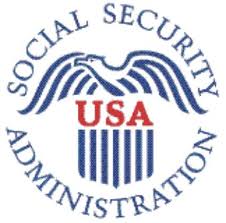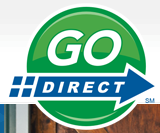Social Security Goes Paperless & Gets Lean, Green & A Little Mean
It seems the Social Security Administration has given up its love affair with the post office and has found an electric new paramour. Two major changes are taking place with regard to how the SSA is reducing its costs…and its paper usage.

THE CHECK IS NOT IN THE MAIL
Prior to this month, anyone registering for first-time Social Security or Supplemental Security Income benefits had the choice between paper checks or electronic payments. Effective May 1, 2011, however, anyone who signs up has to choose among options for receiving funds electronically. There are three electronic payment alternatives:
1) Direct Deposit — This method, similar to the way most Americans now receive their wages, has some distinct advantages.
Speed — Payments appear in recipients’ bank accounts soon after midnight on the date of payment.
Convenience — There’s no need to go to the bank to deposit checks, delaying earning of interest or risking the lost or misplacement of a check.
Security — Social Security check fraud is minimized because ne’er-do-wells can’t gain access to recipients’ funds by mailbox-diving.
While direct deposit is not perfect, it’s generally a simple and secure way to receive benefit payments. When registering for new benefits via direct deposit into a bank or credit union account, be ready to supply your:
Financial institution’s routing transit number — That’s the first set of numbers, on the the bottom left of any check, bound on either side by the following symbol |: and looking something like |: 054000030 |:
Account number
Account type (checking or savings)
2) Direct Express is a MasterCard-branded debit card. Instead of mailing a check, the Social Security Administration deposits federal benefit payments directly into a recipient’s card account. The card, which looks like any other ATM or debit card, can generally be used to withdraw money at ATM machines or at the teller stations at banks or credit unions, to make purchases at retail locations, to get cash back with purchases (such as at grocery or drug stores) or to pay standard bills.
The advantages of Direct Express cards are similar to those of direct deposit:
Security — There’s no risk of lost or stolen checks, as the money is merely loaded into the Direct Express account, and thus, onto the card. The account itself is protected by the use of a 4-digit PIN (personal identification number). The funds in the account are protected by federal consumer regulation laws and are FDIC-ensured, just like funds held in a generic bank account.
If a user loses the Direct Express card and reports it promptly, the card (and the associated value) will be replaced for free. Additional replacements in the same calendar year cost $4, and an overnight delivery of a replacement card costs $13.50.
Ease of Use — Benefits (whether Social Security retirement benefits or Supplemental Security Income) are automatically posted to the Direct Express card account on a specified payment day each month. You don’t need to keep an eye on the mailbox.
Convenience — Since there’s no need to deposit or cash a check, you can skip the bank and avoid usurious check-cashing services. Direct Express cards can be used to make purchases anywhere debit MasterCards are accepted.
The Social Security Administration notes that signing up for the card is free, and that there are no monthly charges for using the Direct Express card. Other bank-like services provided for free include:
- Access to a toll-free customer service number or website 24/7/365
- Optional phone, email or text message notification of deposits
- Optional phone, email or text message low balance alerts when an account balance falls below a pre-specified level
However, Direct Express card network users are accorded only one free ATM cash withdrawal per deposit per month. After that, there’s a $0.90 surcharge for each additional ATM withdrawal. Other charges include:
$0.75 to have a paper statement mailed
$1.50 to have funds transferred from the Direct Express account to a bank or credit union account
$3.00 plus 3% currency conversion fee for each withdrawal via a non-U.S. ATM
3% currency conversion fee for each purchase/transaction outside of the United States
While the Direct Express program is safer and more convenient than paper checks, I would strongly encourage readers to opt for direct deposit. With direct deposit, the money is there in one’s bank or credit union account. There’s far less chance of theft or loss; if you lose a bank debit card, you can still write a check, but if you lose your Direct Express card, you’ll have to wait for a replacement to arrive, leaving you without access to your money for some number of days.
Direct Express is for those who don’t have traditional accounts at financial institutions. While I counsel against operating without a bank or credit union account, I understand that increasing bank maintenance fees are making it harder for everyone, and particularly those with low balances, to afford accounts. However, there are a variety of internet-only banks that provide ATM access, free checking accounts and low (sometimes $1) minimums. To find an account that suits your needs, check out the Checking & Savings tab at Bankrate.com and search via the “Find a Checking Account” menu.
3) Electronic Transfer Account (ETA) is a low-cost, federally-insured account through traditional financial institutions. The U.S. Department of the Treasury designed the electronic transfer account for recipients of federal benefits (including Social Security and Supplemental Security Income, veterans’ benefits, civil service or military wages or retirement benefits, and Railroad Retirement Board payments) who either do not have, or may not qualify for, a checking or savings account at a traditional bank or credit union. To find an ETA provider in your state, click on the ETA provider map.
Some of the features of an ETA include:
–A cap on fees at $3/month
–FDIC-insured funds
–No minimum balance (except in states where credit unions are legally required to enforce minimums)
–At least four withdrawals may be made per month
–A monthly printed statement at no charge
While ETA account-holders can make transfers and withdrawals, they cannot write checks.
For more information, call 888-382-3311 or review the ETA fact sheet.
NOT JUST FOR NEWBIES
Even if you currently get paper checks from the Social Security Administration, all of this information applies to you, too. Anyone still receiving payment by check will have to switch to an electronic payment method by March 1, 2013.

Why wait until the last minute? Visit the Go Direct website to get started.
THE BIG PICTURE
The change from paper checks to digital payments will save the Social Security Administration approximately $120 million in greenbacks, not to mention administrative labor. In addition, from the (environmentally) green perspective, the move is estimated to save 12 million pounds of paper over the next five years.
TAKING (AWAY) YOUR STATEMENT

While the elimination of paper checks is economically, environmentally and individually a positive one, another change isn’t quite as spiffy.
The Social Security Administration began mailing annual personalized statements to 125 million workers aged 25 or older in 1999, at an annual cost of approximately $70 million, according to SSA Commissioner Michael Astrue. (Statements had been available upon request and/or sent automatically to some groups of workers, as early as 1988.) In 2010, more than 158 million Americans received such statements, which have become an indispensable resource for gathering essential information about future retirement income and enabling personal financial planning.
In the past, I’ve blogged about the importance of maintaining and checking your Social Security benefits statements. Unfortunately, it looks like my advice will now be moot.
As of last month, the government has suspended mailing those paper statements. Normally, you’d receive your statement three months prior to your birthday, but as of April, the economy has forced the government to go digital. So, if you’re a July baby, you can stop checking your mailbox — there’s no statement on its way.
For now, at least, to get a baseline benefits estimate, users must go online at the Social Security Administration’s Benefits Estimator or call 800-772-1213. At the Benefits Estimator screen, enter your full name, mother’s maiden name, Social Security number, birth date and place of birth. It should go without saying that you should only use this estimator on a secure computer with a secure firewall enabled. Don’t even consider using a public computer, or using your own laptop on a public WiFi network.
Unfortunately, at least in the short term, we will all be missing some vital information, as the individual paper statements provided far more detailed information than the online Social Security Estimator tool can do. For example, our paper statements have always shown an individual’s lifetime earnings history and estimates of disability and survivor benefits, which the online estimator does not.
There are other problems. Younger workers, or any workers who haven’t earned the 40 work credits necessary to qualify for any sort of benefits payout, can’t access the online Benefits Estimator. While local Social Security Administration offices can provide printouts of the required information to workers who visit in person, this is neither a convenient nor long-term solution.
It is widely rumored that more robust online account information will be made available in the near future, hopefully by the end of this calendar year, and when more is known, I’ll be sure to report on it. Until then, the government is saving money, to the tune of approximately $30 million between April and September (which marks the end of the fiscal year). If, as planned, mailed statements are only resumed for workers 60 and older, the government can save additional $60 million in 2012 and annually thereafter.
Paper Doll wonders, however, what impact these missing statements might have on personal, rather than national, economies. Previously, paper statements acted as annual (and nagging) reminders to get to work on planning for the day when we wouldn’t go to work. Without a snapshot of where we stand, and a pesky tug on the sleeve to remind us to be concerned, how many of us might put off peering into the abyss of our financial futures?
Readers, please share your thoughts on these cost-saving, environmentally-friendly, but decidedly revamped Social Security Administration methods.




Follow Me